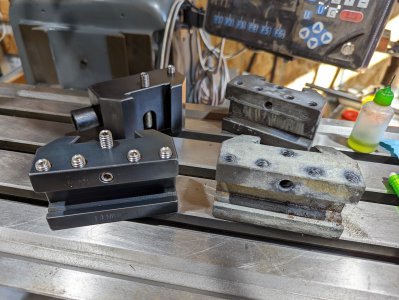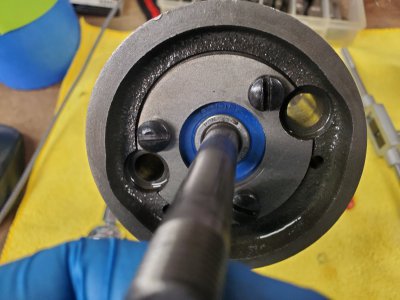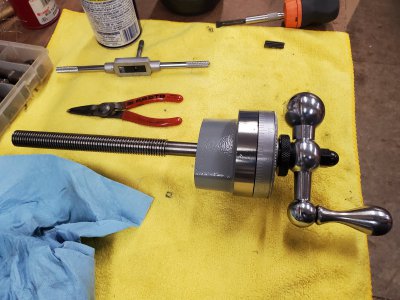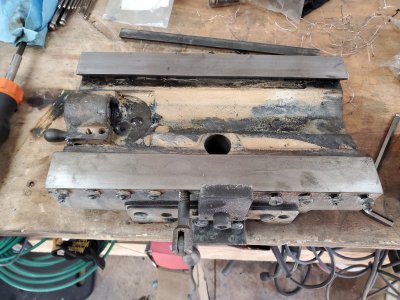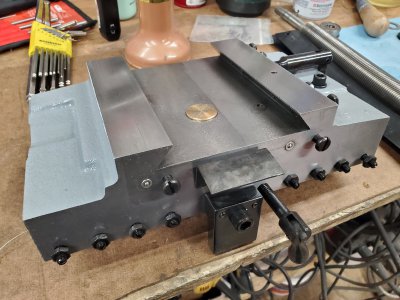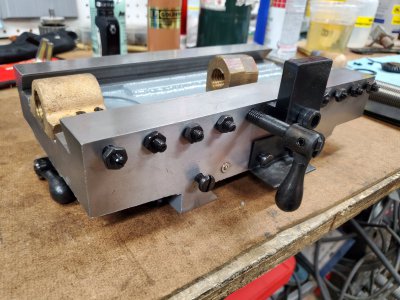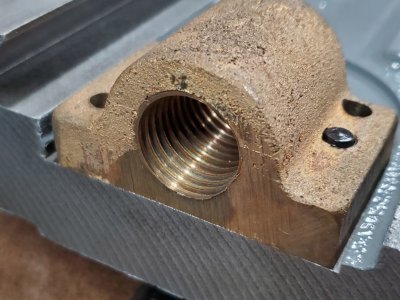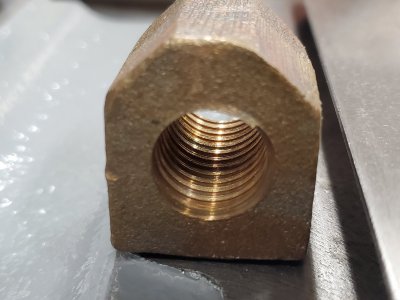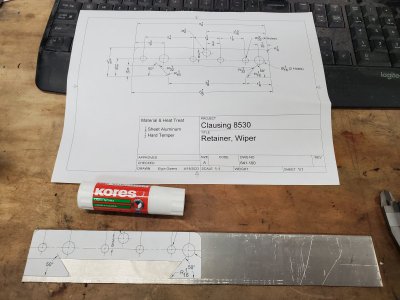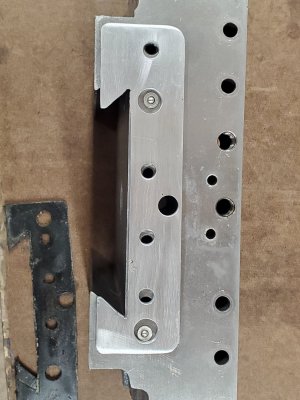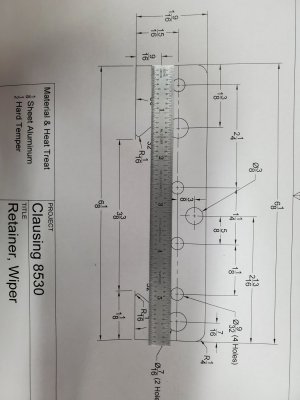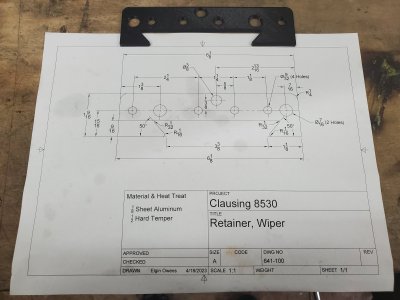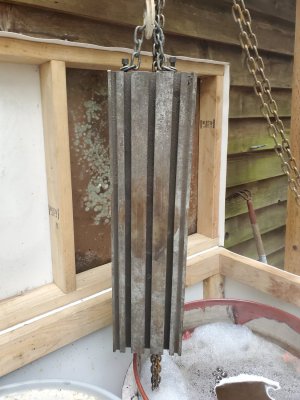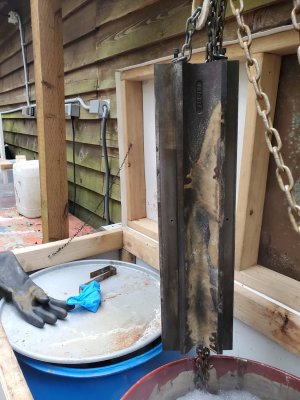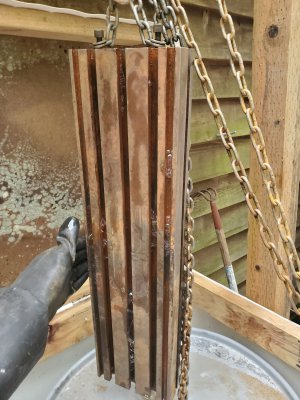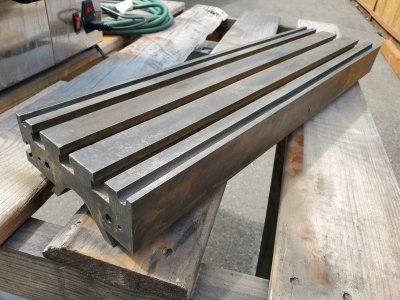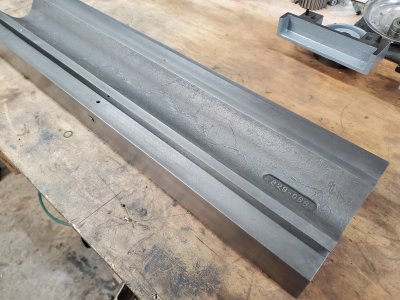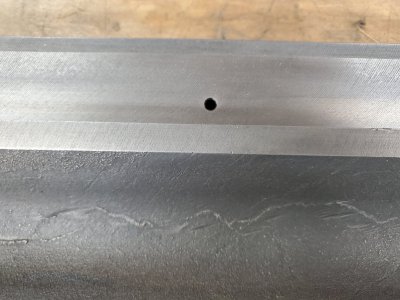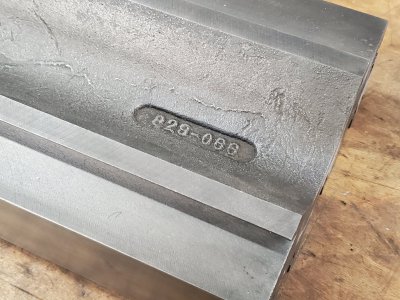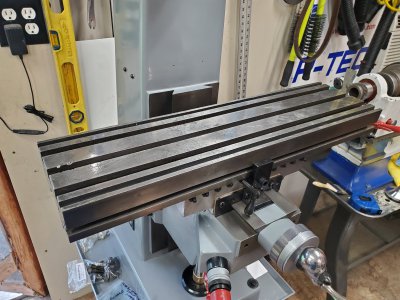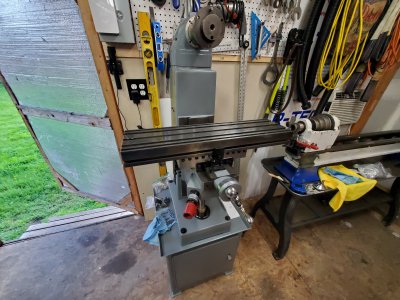- Joined
- Apr 23, 2018
- Messages
- 6,830
Kleen Strip concrete prep is 50/50 HCl/PO4, and it is advertized as a metal prep for painting. I like it because it is cheap and takes off rust, too.
OSPHO Rust is 50/50 chromic/phosphoric, costs $40/gallon at the hardware store, and works well diluted. When I dilute OSHPO, I use hot water from the tap, and drop parts into the warm solution in a bucket. The prep does blacken, as phosphoric acid does, but that grey/black finish it leaves takes a bluing better than bare metal. Cerakote and K&G both recommend phosphate pre-treatment before painting, too. I also like that phosphate-blackened parts, once rinsed and dried, don't flash rust and are stable for a long time, and still take buing.
Nitric acid is usually the first one you would go to if dissolving metals is your goal. Nitric doesn't blacken, but the nitrate gives over to bluing very easily compared to hydrochloric (talk to my buddies Boltzmann and Gibbs about how that works). Nitric acid is no more or less a hazard than HCl. It's more of a hazard than glacial acetic if you dump it on your skin, but less of a hazard than sulfuric, which can be bought at the auto supply store and concentrated on a hot plate. No, nitric acid has always been difficult in the US. I can still buy it at the hardware store in Germany, right next to the nitro solvent, but the reason you can't buy either product here here is simple- the gubmint is protecting you from terrorists. What they don't know is how easy the salt acids are to make from common things. It's easier than moonshine, so that bar is low.
OSPHO Rust is 50/50 chromic/phosphoric, costs $40/gallon at the hardware store, and works well diluted. When I dilute OSHPO, I use hot water from the tap, and drop parts into the warm solution in a bucket. The prep does blacken, as phosphoric acid does, but that grey/black finish it leaves takes a bluing better than bare metal. Cerakote and K&G both recommend phosphate pre-treatment before painting, too. I also like that phosphate-blackened parts, once rinsed and dried, don't flash rust and are stable for a long time, and still take buing.
Nitric acid is usually the first one you would go to if dissolving metals is your goal. Nitric doesn't blacken, but the nitrate gives over to bluing very easily compared to hydrochloric (talk to my buddies Boltzmann and Gibbs about how that works). Nitric acid is no more or less a hazard than HCl. It's more of a hazard than glacial acetic if you dump it on your skin, but less of a hazard than sulfuric, which can be bought at the auto supply store and concentrated on a hot plate. No, nitric acid has always been difficult in the US. I can still buy it at the hardware store in Germany, right next to the nitro solvent, but the reason you can't buy either product here here is simple- the gubmint is protecting you from terrorists. What they don't know is how easy the salt acids are to make from common things. It's easier than moonshine, so that bar is low.

